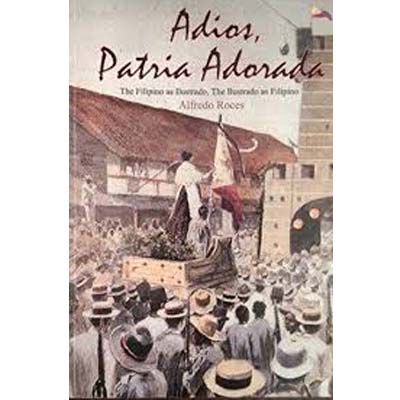In 1984, the late historian Dr. Antonio S. Tan came out with The Chinese Mestizos in the Formation of Filipino Nationality, an excellent monograph that explores for the first time the great role played by the Chinese mestizos in the formation of the Filipino nation. It was first published by the Asian Center of the University of the Philippines and reprinted by Kaisa Para Sa Kaunlaran in 1987 with the permission of Dean Josefa M. Saniel.
Tan’s pioneering work focused on identifying the Chinese mestizo leader or leading figure in the Propaganda Movement, the Philippine revolution against the Spaniards and the Philippine-American War.
Just recently, after reading the revised edition of Alfredo Roces’ Adios, Patria Adorada: The Filipino as Ilustrado, The Ilustrado as Filipino (FEU Publications, 2016), we realized further and deeper and in a more detailed and vivid way, how the mestizos (mainly Chinese mestizos) contributed socially, culturally, economically and politically to the formation of the Filipino nation.
To share with our readers Roces’ profound knowledge of Philippine history, we quote at length his concise and brilliant expositions on mestizos from his book’s Prologue and first five chapters:
…the 19th century, the era of the ilustrado – inventors of the Filipino national identity. (p.1)
By mid-19th century, the term hijo del pais, creole and Filipino had obfuscated with the passing of decades to become more or less synonymous for mestizo (Spanish, Chinese and indio mixed bloods). (p. 11)
The bonding element for this multi-layered social cake was the mestizo (both Spanish and Chinese) class. They welded these separate layers in the pastry – the Spanish creoles, the indio principalia and the indo masses – into the Filipino society. Thus, the peninsulares and the pure Sangleys excepted, a Filipino society, meaning from creole down to indio, had in the course of several generations in the 19th century began to coalesce, genetically cemented by the mestizo, both Spanish and Chinese. (p.12)
All credit here to the indio woman who married or who had a liaison with a Spaniard of Chinese descent because Philippine indigenous society then (as now) was a bilateral kinship system with the offspring enjoying equal links with the kin of both parents, unlike the Chinese which is patrilineal. …It was only natural therefore that those of mixed blood in the Philippines readily identified with the race and social class of both their parents. (p. 13)
From childhood, the ideas and customs, social graces and moral values of both the child’s parents were imbued by the Spanish-Indio or Chinese-Indio mestizo. …Rizal and his colleagues in the Propaganda Movement of the 1880s were ushered into the scene by two important developments: one was the emergence of a wealthy class, thanks to the boom in the export crops from a growing demand from world trade; the other was the rise of the Chinese mestizo. (p.23)
Regional principalia barriers were breaking down. University days in Manila or overseas generated richer social contact with other ilustrados outside their own pueblos, allowing the ilustrados a broader professional and social prominence beyond the traditionally narrow parochial confines of their own principalia. With the principalia of various provinces from Ilocos to the Visayas rubbing elbows, shared causes and common problems were – perhaps for the first time – re-cognized as national themes. A national viewpoint developed. (p. 28)
The mestizos helped knock down all these racial fences, identifying all classes with Filipino nation. (p. 30)
As Rizal in 1887 explained to his friend Blumentritt on the racial make-up of the staff in a newspaper in Madrid: “They are young creoles of Spanish descent, Chinese mestizos and Malays, but we call ourselves only Filipino.” (p. 35)
…Mestizo culture served as the catalyst to form what we now recognize as the Filipino identity. A national consciousness was the mestizo contribution. (p. 36)
To sum up: The 19th century in the Philippines can be rightly called the century of the mestizo. Mestizos helped knock down racial fences and usher in a national consciousness, from which emerged the Filipino identity.
